As men enter their 50s, they may notice changes in their bodies that can affect their health and well-being. For example, the body endures hormonal shifts, a decrease in muscle mass, and a greater accumulation of fat mass as it grows older, Banner Health explains. However, by following a weekly workout plan, men can increase their physical fitness, boost their metabolism, and enhance their overall health. We chatted with Jarrod Nobbe, CPT, a certified personal trainer with Garage Gym Reviews, who delivers a rock-solid weekly workout routine for men in their 50s.
Gear up for exercises that will target different muscle groups, promote cardiovascular health, and improve flexibility and balance. Whether you’re a beginner or an experienced gym-goer, this workout plan can help you achieve your fitness goals and feel your best. In addition, following Nobbe’s weekly workout routine for men can help you build muscle mass, increase bone density, and speed up your metabolism. However, speak with your doctor before starting any new exercise program, and listen to your body’s signals to avoid overtraining. With consistency and dedication, you can achieve your fitness goals and feel your best in your 50s and beyond.
Keep reading for Nobbe’s weekly workout routine for men in their 50s, and next, don’t miss 7 Best Exercises for Men to Gain Strength Without Equipment.
Day 1 (Lower Push and Upper Pull)
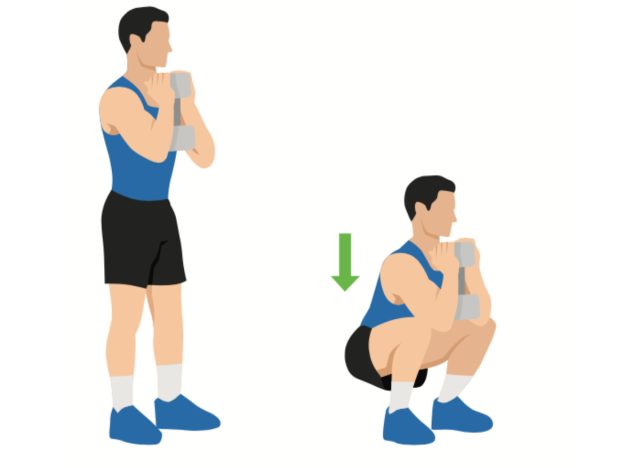

Exercise #1: Dumbbell Goblet Squats (three to four sets of eight to 12 reps)
“This exercise will challenge lower-body strength, mobility, and core control. It’s a great movement to progress into other squat variations, like dumbbell front squats, barbell back squats, or front squats,” says Nobbe.
Stand with both hands holding the dumbbell at sternum height, and brace your core before each rep. Allow your knees and hips to unlock simultaneously, descending into a balanced (whole-foot) and controlled squat.
Exercise #2: Chin-ups (three to four sets of five to eight reps)
“This movement is one of the best upper-body strength exercises. Pushing your bodyweight movements in training is a guarantee to be healthier and more resilient,” says Nobbe.
Align your grip at shoulder-width, palms facing away from your body. Brace your core, and think of pulling the bar down to move your body up. Control the lowering phase to the whole arm’s length before the next repetition.
Exercise #3: Box Step-ups (three sets of 12 to 15 reps per leg)
“A unilateral (single side) movement like this will progress strength quicker in the initial training phases,” explains Nobbe. “Unilateral exercises are excellent for strengthening balance and coordination while cleaning up asymmetries.”
Keeping your working leg planted on a box (12 to 20 inches high) for the entire set, drive your foot through the box to stand up strong and tall. Your opposite leg should have a knee drive through the movement, peaking at a 90-degree hip angle. Then, control your descent to the floor, focusing on stabilizing your working leg.
Exercise #4: Supported Staggered Stance Dumbbell Rows (three sets of 12 to 15 reps per arm)
“Unilateral movements are great for quick increases in stability and strength. Adding a horizontal row also improves the upper back and shoulder health, improving scapular function,” says Nobbe.
Begin this exercise by supporting yourself with one hand on a bench. Train your non-dominant side first, and have that same side leg as the rear leg in the staggered stance. Next, focus on a controlled row, up and back with the elbow, followed by a controlled lowering to the whole arm’s length. Keep your core braced at all times.
Exercise #5: Bird-Dog Holds (three sets of 15 to 30-second holds)
“The bird-dog hold is an excellent exercise to improve core strength and stability and relieve low back pain,” states Nobbe.
Get down on all fours, and reach your opposite arm and leg away from your body (right arm and left leg). Brace your core, and engage your hips for stabilization. Focus on keeping full tension through each repetition hold.
Day 2 (Upper Push and Lower Pull)
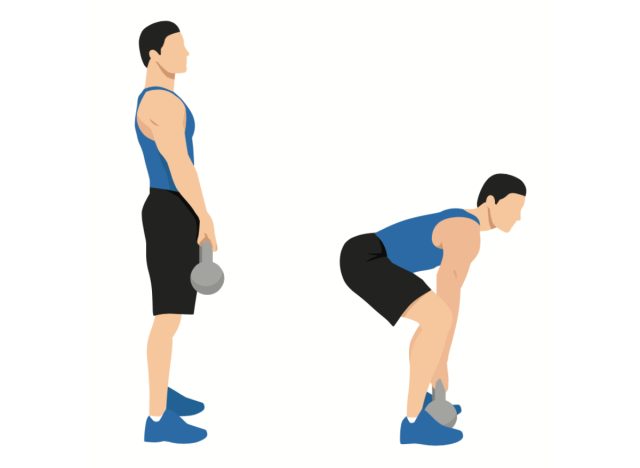

Exercise #1: Seated Alternating Dumbbell Shoulder Presses (three sets of 12 to 15 reps per arm)
“Increasing overhead movements improve our upper body strength and stability. In addition, unilateral exercises allow for safer repetitions if you’re limited by mobility,” says Nobbe.
To begin, stand straight while holding a dumbbell in each hand, close to your shoulders, with a straight wrist. Drive the dumbbell off your shoulder toward the ceiling. Keep your bicep close to your ear to ensure shoulder stability. Alternate pressing each side.
Exercise #2: Kettlebell Deadlifts (three to four sets of 12 to 15 reps)
“A strong deadlift protects the body and back in everyday activities when lifting objects off the ground. This variation allows for progression into other movements, such as double kettlebell deadlifts, trap bar deadlifts, and barbell deadlifts,” explains Nobbe.
Position the kettlebell in line with your ankles, between your feet. Keep your shins vertical as you set your grip with your chest up and your back engaged. Drive your legs through the floor, and finish with the hips at the top. Maintain a controlled descent to the next repetition.
Exercise #3: Pause Pushups (three sets of eight to 12 reps)
“The ability to perform bodyweight movements improves strength and reduces injury risk as we age,” states Nobbe. “The classic pushup also challenges the dynamic stability of the core.”
To begin, get into a plank position, place your hands under your shoulders, and spread wide. Keep your body braced and aligned from head to heels. Control your lowering phase while keeping your head and hips moving together. Pause at the bottom for two seconds, then drive the arms through the floor, moving your body back to the starting plank position.
READ RELATED: 9 Best Costco Deals You Can Still Score in May
Exercise #4: Glute Bridges (three sets of 12 to 15 repetitions)
“Hip strength will help improve stability and keep the lower back strong. Glute activation is weak due to sedentary work and lifestyles,” says Nobbe.
Set a dumbbell in your hip crease. Position your heels about eight to 12 inches from your hips. Brace your core, and drive your hips straight up. Squeeze the glutes at the top, and control your lower to the beginning position.
Exercise #5: Alternating Dead Bugs (three sets of five to eight repetitions per side)
“The alternating dead bug challenges your ability to engage the core and control the pelvis, resulting in improved core strength, stability, and hip health,” explains Nobbe.
Lying on your back, position your arms straight over your shoulders, reaching toward the ceiling. Bring the knees above the hips, and position the hips, knees, and ankles at a 90-degree angle. Breathe in, and brace your core, exhaling as you keep one leg in position and the other extends straight until the heel taps the floor. The arm opposite the extended knee should also lower. Breathe in as the leg and opposite arm moves back in. Repeat this alternating side to side.
Day 3 (Aerobic Fitness/Conditioning)
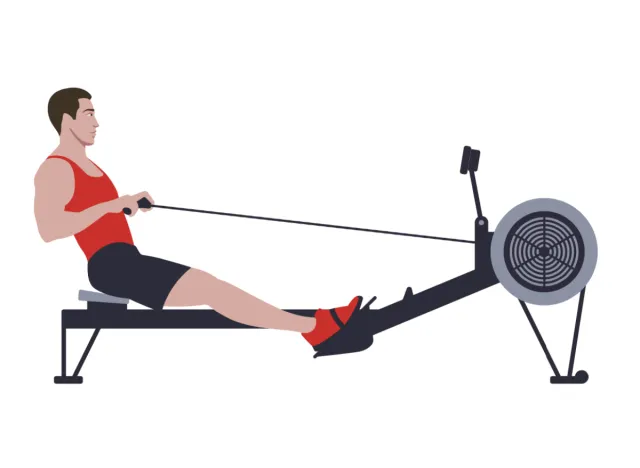

“Pick your favorite cardio machine, such as a treadmill, rower, or stationary bike, and do some interval condition,” says Nobbe. As for the workout, choose between doing more high intensity at 30 seconds on, 30 seconds off for 10 to 12 rounds at 65 to 75% of your maximum heart rate, or doing 10 to 20 minutes of steady-state cardio at 55 to 65% of maximum heart rate.
Day 4 (Rest and Recovery)
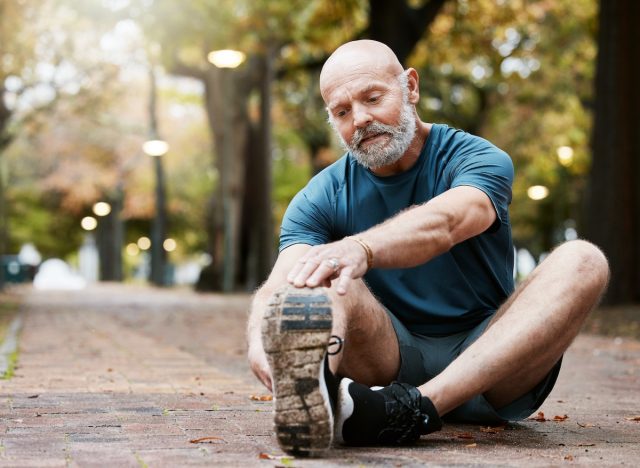

“Use this day to practice mindful movement through stretching, yoga, walking outside, or practicing a mobility flow,” advises Nobbe. “We don’t want recovery days to be stagnant but an opportunity to allow the body to recover, physically and mentally. Also, make sure to hydrate, as your body usually needs it on recovery days after three consecutive training days.”
Day 5 (Full Body)
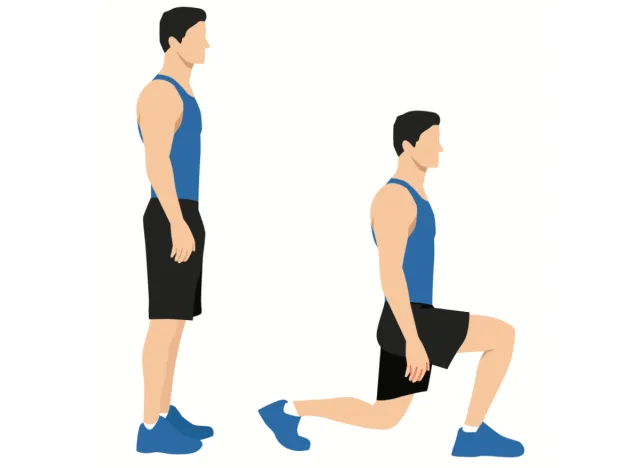

Exercise #1: Single-Arm Lat-Pulldowns (three sets of five to eight reps)
“A single-arm lat pulldown will get a vertical, full range of motion, strengthening the back and scapula, which often work together,” explains Nobbe.
Set the handle at arm’s length (think of a full reach). Brace your core, and consider pulling your elbow to your pocket while engaging your back. Hold for a slight pause, then control the movement back to the starting point.
Exercise #2: Alternating Reverse Lunges (three sets of five to eight reps per leg)
“This movement improves single-leg strength and body stability. Dynamic movement requires excellent control and coordination when executing the action. Plus, it trains both the legs and the hips together,” says Nobbe.
Focus on keeping your front foot balanced and planted on the floor. Step one leg straight back, aiming to bend your knee to just above the floor under your hip. Your torso should stay stacked and braced. Drive through your front foot, standing firm as you bring your trailing leg back under the body.
Exercise #3: Incline Dumbbell Bench Presses (three sets of eight to 12 reps)
“The incline press allows you to train the anterior (front) shoulder in unison with the pecs, creating excellent shoulder stability and strength and allowing the shoulder to stay in a safer position,” states Nobbe.
Laying flat on a bench, hold a pair of dumbbells with your arms 45 degrees from your shoulders at chest level. First, drive the dumbbells off your chest, focusing on a solid, stable full-range press. Next, control the lowering of the dumbbells to the start position. Aim to keep the weight over your chest and shoulders at all times.
Exercise #4: Dumbbell Single-Leg Reverse Deadlifts (three sets of eight to 12 reps per leg)
“The single-leg RDL creates excellent strength and stability in the hip and knee joints. It also challenges the body to stabilize as the legs move as not to rotate,” says Nobbe. “Using unilateral movements improves strength quicker and helps clean up imbalances.”
With one foot balanced, slightly unlock your knee and reach the opposite foot behind, engaging your glute. Allow the weight to track inside your leg, with your eyes looking in front of you aimed at the floor. Descend until you feel a stretch in your hamstring. Bring your trailing leg back under your body and stand tall.
Exercise #5: Side Planks (three sets of 15 to 30-second holds per side)
“The side plank teaches how to brace the lateral side of the core, an often overlooked muscle group,” says Nobbe. “It helps create stability and strength in the trunk and low back compared to traditional core exercises.”
Lie on your side with your shoulders stacked straight and the hips aligned. Place your bottom elbow under your shoulder, and drive your hips up to the ceiling. Engage the lateral side of your core, keeping your hips and chest straight.
Day 6 (Aerobic Fitness/Conditioning)
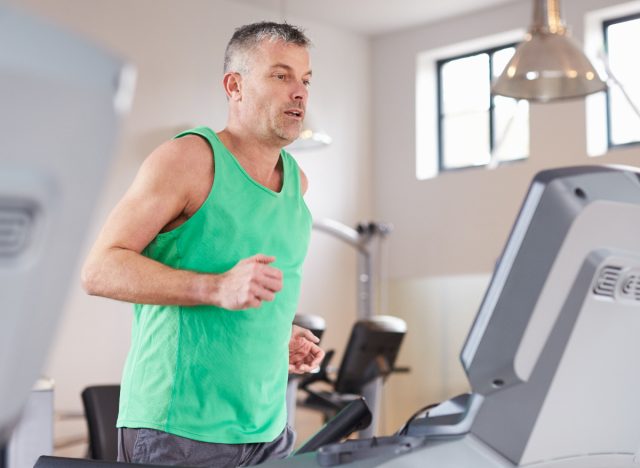

Once again, select a cardio machine (different from the previous aerobic session), and choose between a high-intensity or steady-state cardio workout. Do 10 to 12 rounds of 50 seconds on and 10 seconds off at 80 to 85% maximum heart rate for high-intensity. For steady-state, do 10 to 15 minutes at 55 to 65% maximum heart rate.
Day 7 (Rest + Recovery)
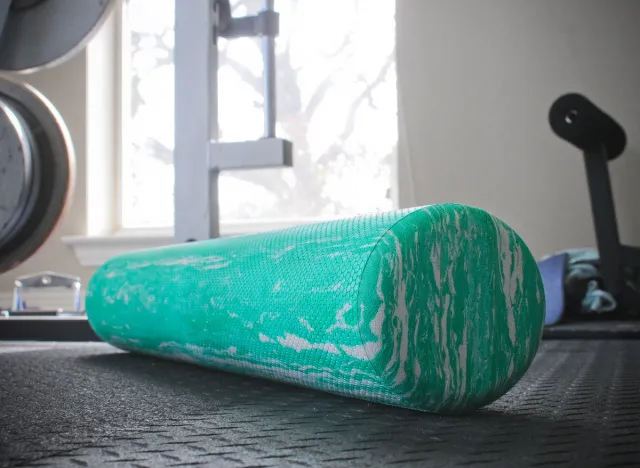

“For rest and recovery days, focus on foam rolling, stretching, hydration, and relaxation,” says Nobbe. “Recovery days allow you to reset and prepare the mind and body for the week ahead. So plan your workouts, goals, and get outside and move around.”










